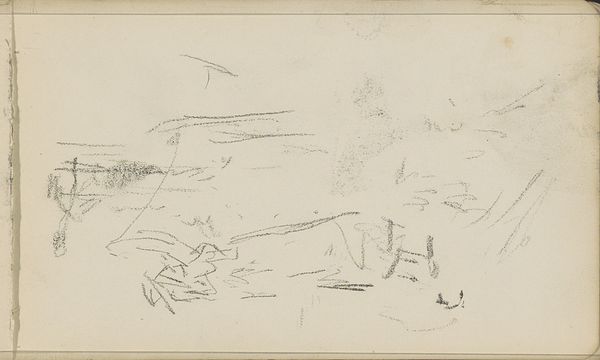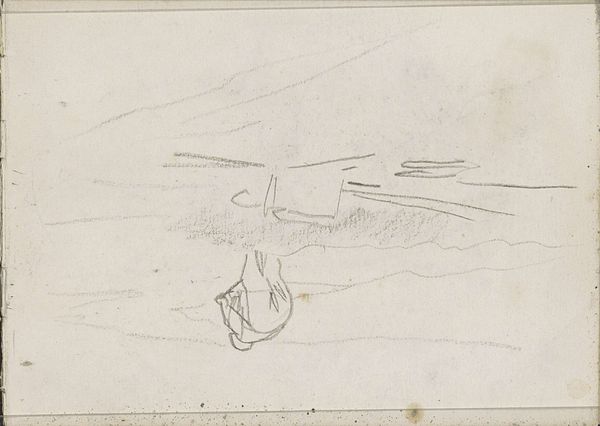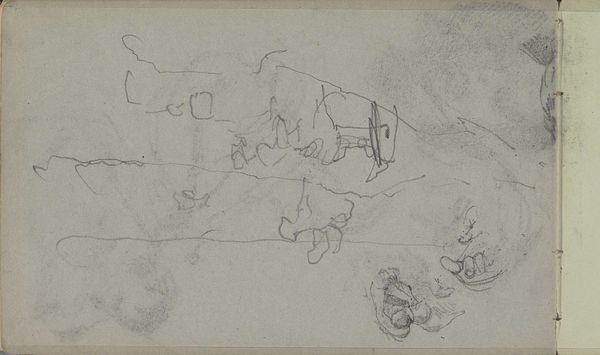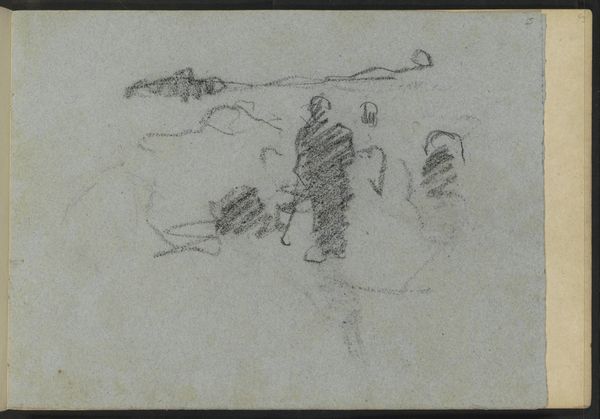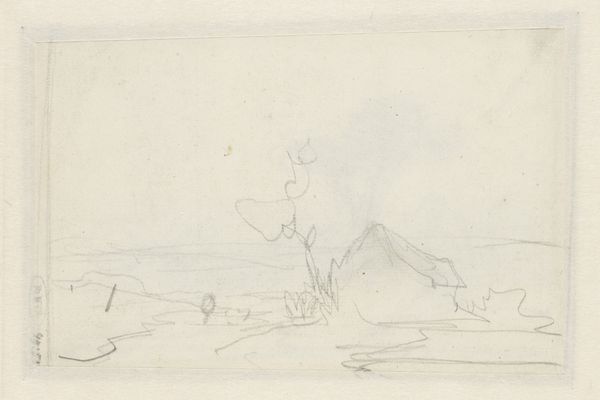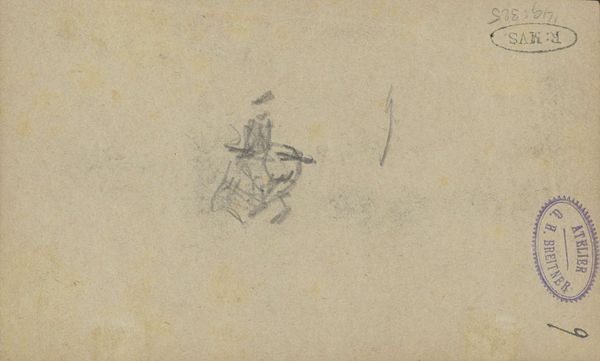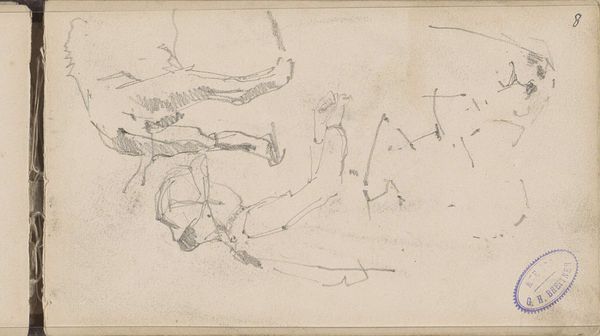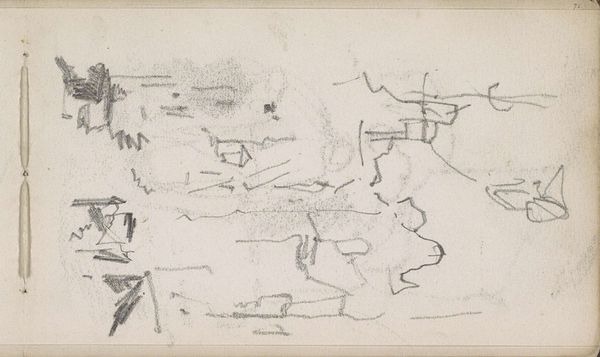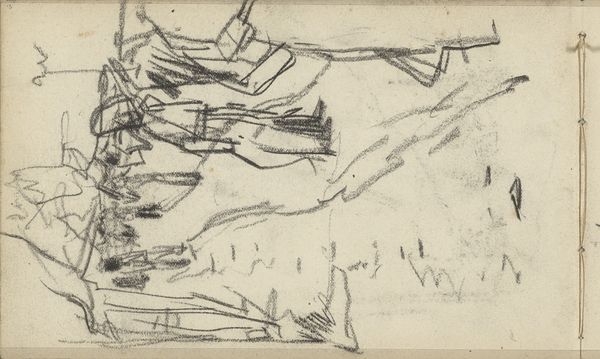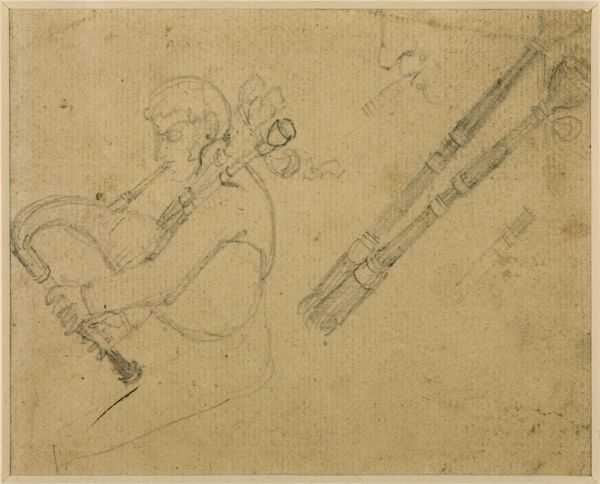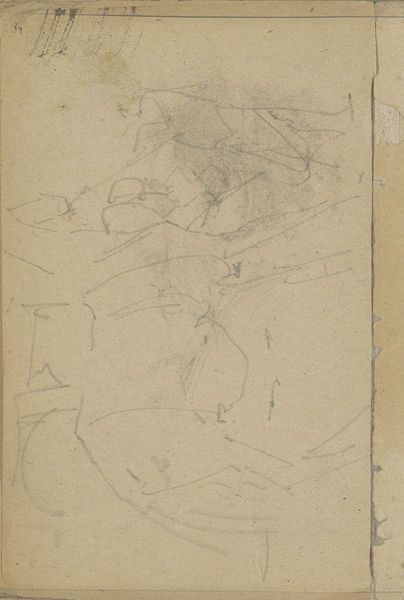
drawing, paper, pencil
#
portrait
#
drawing
#
amateur sketch
#
toned paper
#
light pencil work
#
quirky sketch
#
impressionism
#
sketch book
#
incomplete sketchy
#
figuration
#
paper
#
personal sketchbook
#
idea generation sketch
#
pencil
#
sketchbook drawing
#
sketchbook art
Copyright: Rijks Museum: Open Domain
Curator: Here we have a pencil drawing on paper from George Hendrik Breitner, tentatively titled "Studie, mogelijk een figuurstudie," which translates to "Study, possibly a figure study." It’s dated between 1881 and 1883 and resides here at the Rijksmuseum. What are your initial thoughts? Editor: It's incredibly ethereal, almost ghostly. The light pencil work and the toned paper give it a sense of age and impermanence, like a memory fading at the edges. I also find it striking how incomplete the sketchy rendering feels, but strangely impactful. Curator: The sense of a fleeting moment is key. Breitner was known for capturing urban life, the raw energy of Amsterdam. This feels like a glimpse into his process, a quick notation before developing a larger composition. The lines are suggestive more than definitive, inviting interpretation. Think of sketchbooks from that period – what purposes did they serve beyond mere preparation? Editor: Right, this wasn't simply about rendering reality, it was about constructing it, about finding the figure in the void. This "incomplete sketchy" aesthetic makes me wonder about accessibility in art institutions. Breitner comes across like someone documenting on the fly the oppression around him—do we show art from social recorders differently in this present moment and does art now reflect true liberation? I mean it doesn't right? Because we are still in it... the fight! Curator: An important observation that allows me to point towards the practice of sketching in sketchbooks, this gave rise to Impressionism in France for capturing fleeting atmospheric conditions. And in some way here, with Breitner’s focus, one feels the urban grit taking shape. Notice how the light pencil work and "quirky sketch" qualities create something that transcends realistic rendition; instead, these “idea generation sketches” become emblematic of modern uncertainty at the turn of the century. What do you make of the ambiguous form and content of his other figurative portraits? Editor: I think Breitner, in this instance, is capturing an instant, a feeling about urban existence, however briefly. So maybe my "sketchbook art" observation is that they function like our contemporary polaroids and digital snapshots—a democratization of art-making, revealing what escapes the grand narratives—or is he an amateur here? The “amateur sketch” descriptor opens more than one door doesn't it? He also has some work, as many others from the period, with clear imperial tones in the East Indies and the far East.... so what of the subjects not pictured here from "then", in relation to the figure who is pictured? Curator: Absolutely. In conclusion, this “figuurstudie”, albeit a sketch, allows a very sensitive glimpse not only into Breitner’s own process, but more broadly into the rapidly changing cultural values and ideas present during its time and ours. Editor: Precisely. It makes you consider where we derive meaning from in preliminary art pieces, how they might reflect societal anxieties, and prompt much-needed critical discussion in current discourse and hopefully positive futures.
Comments
No comments
Be the first to comment and join the conversation on the ultimate creative platform.
